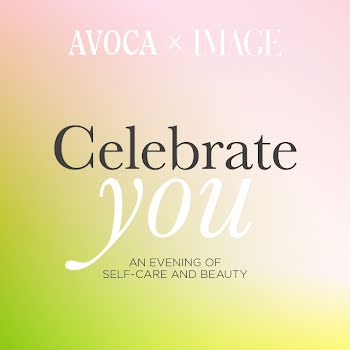
Chronic migraines: ‘I was convinced that I had some form of cancer, that’s how bad mine became’
By Jennifer McShane
14th Nov 2020
14th Nov 2020
Research reveals that 1 in 7 Irish people suffer from migraines – chronic or otherwise. Only 2 in 10 fully understand what a migraine is and 70% feel it impacts their quality of life. We speak to one woman who says her life has been turned upside down due to the condition
It started in her teens. Headaches that would see her miss school for days in a row. Or, at least, she thought they were headaches. “That’s part of the problem,” Sara from Dublin explained. “So many think and say, ‘Oh, it’s just a headache’ when you can be bed-bound with the pain. Migraine is a debilitating condition and because its effects are invisible, it means people who don’t suffer from them, don’t really understand.”
Related: ‘Not just a headache’: It’s time to talk about migraine
“I would be at the GP constantly,” Sara said, explaining that hers started at age 14 and have been recurrent ever since (she is now in her late twenties). “I’d get pain killers and be told I’d be grand and to go home but these weren’t normal headaches. I could barely move due to the pain if one was bad enough.
“I know a lot of doctors thought I was overreacting and I’d be teased in school for going home early and constantly having sick days. It’s often dismissed as nothing but the pain is unbearable — as are all the other symptoms that come with one: nausea, vomiting and blurred vision.”
“I was convinced that I had some form of cancer, that’s how bad mine became. I demanded so many scans just because I was convinced that a migraine couldn’t be this bad. I was even rushed to hospital once, sure I was having a seizure.”
Women are three times more likely to have migraine attacks than men, largely due to fluctuations in hormones, and many can develop them in their teenage years as Sara has. “I’m not sure what caused mine, I’m an anxious person and prone to stress so I’m sure that doesn’t help.”
What is a migraine?
Migraine is the most common neurological condition in the world, affecting about 12–15% of people. It is three times more common in women than it is in men and is usually inherited. It is a very individual condition. Some people experience only one or two attacks per year while others suffer on a weekly basis. An attack can last from 4 to 72 hours, according to Teva Ireland. There are approximately 600,000 to 700,000 people in the Republic of Ireland with this condition.
The most common symptoms are:
- Intense throbbing headache, usually on one side of the head, worsened by movement and lasting from 4-72 hours.
- Nausea, sometimes vomiting
- Sensitivity to light
- Sensitivity to noise
- Sensitivity to smells
- Stiffness of the neck and shoulders
- Blurred vision
Sara goes on to say that she has all the above symptoms and eventually, after an expensive process of seeing various doctors, she was given a diagnosis of chronic migraine but she says it’s a simplistic term given the nature of the condition.
“I was convinced that I had some form of cancer, that’s how bad mine became. I demanded so many scans just because I was convinced that a migraine couldn’t be this bad. I was even rushed to hospital once, sure I was having a seizure. But that’s what the pain was, all down to a migraine. The thing is that there’s still a lack of awareness. People hear the word ‘migraine’ and automatically think you just have a headache and you’re brushed off or, as I was, repeatedly called a hypochondriac.”
Stigma
“It’s definitely stigmatised,” Sara adds. “Perhaps not as much now, but certainly it’s still not seen as this potentially life-altering chronic pain condition that you can do little about. I’ve left jobs, lost relationships and friendships due to a lack of understanding and awareness. Thankfully, I have a fantastic support system around me now and I can better manage them, but it’s taken me years to get a handle on it.
“People can constantly try to belittle you or say you’re over-reacting which is distressing and humiliating”
“It’s changed my life even so. I can only work part-time and even this has been a struggle as employers can be dismissive if they don’t understand.” Sara isn’t alone in this as the newly-released study reveals that 8% of Irish people surveyed know of someone or have themselves been refused work due to suffering migraine.
“I’m afraid to go on long-distance flights or even travel at all in case I get one while on a plane — for me, an average migraine can last three days at least and I’d be nervous of being in a foreign country in case I was really bad or stuck on a crowded aeroplane. Alcohol and loud noises are a trigger so it also makes socialising very difficult. My life essentially revolves around managing my symptoms and trying to prevent an attack.”
Managing your triggers
“It’s about knowing your triggers,” Sara continues when asked how she prevents hers. “As there is no cure, the best thing you can do is spot the signs and have a system for managing them. Mine are stress, harsh light, loud noises, lack of sleep and too much coffee or alcohol, so getting rest and eating well is really important.” As is, she explains, seeking the help of a professional.
“Don’t just suffer in silence or try to self-medicate with over-the-counter medicines. Talk to your GP and get a system in place with the right medication so you know you’re doing everything to alleviate —and not aggravate — symptoms. Talk to your friends, family and employer and make them see the severity of what you can go through when you have one.
“There’s nothing to be ashamed about and just because symptoms aren’t visible to the naked eye, doesn’t make it any less of a legitimate condition.”
Migraine diaries are available through the Migraine Association of Ireland and other supports and resources are available from the Migraine Association’s website migraine.ie.
Main photograph: Unsplash
Related: Living with hidden illness: ‘My pain fell on deaf ears – I was told I’d be grand’
Related: ‘I had to retire from work at 29 on medical grounds. I was devastated’
Related: ‘I was advised not to have kids as there’s a high chance I could lose my leg’























